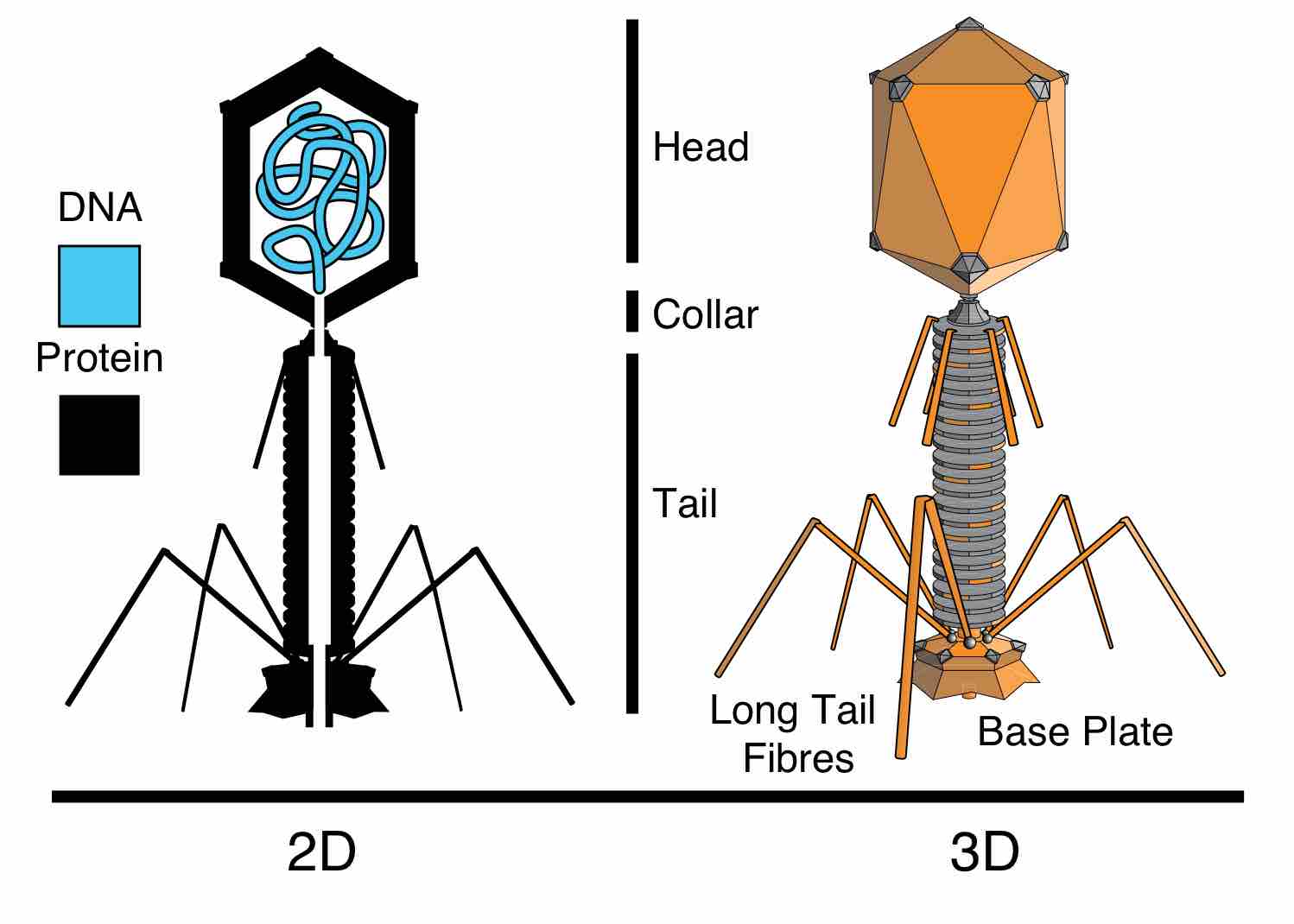Viruses have many structural shapes, often falling into certain categories. While some have symmetrical shapes, viruses with asymmetrical structures are referred to as "complex. " These viruses possess a capsid that is neither purely helical nor purely icosahedral, and may possess extra structures such as protein tails or a complex outer walls.
Some bacteriophages, such as Enterobacteria phage T4 , have a complex structure consisting of an icosahedral head bound to a helical tail, which may have a hexagonal base plate with protruding protein tail fibers. This tail structure acts like a molecular syringe, attaching to the bacterial host and then injecting the viral genome into the cell.

T4 Bacteriophage
T4 is a bacteriophage that infects E. coli and is referred to as a complex virus. Although it has an icosahedral head, its tail makes it asymmetrical, or complex in terms of structure.
The poxviruses are large, complex viruses that have an unusual morphology. The viral genome is associated with proteins within a central disk structure known as a nucleoid. The nucleoid is surrounded by a membrane and two lateral bodies of unknown function. The virus has an outer envelope with a thick layer of protein studded over its surface. The whole virion is slightly pleiomorphic, ranging from ovoid to brick shape.
Mimivirus is the largest characterized virus, with a capsid diameter of 400 nm. Protein filaments measuring 100 nm project from the surface. The capsid appears hexagonal under an electron microscope, therefore the capsid is probably icosahedral. In 2011, researchers discovered a larger virus on the ocean floor off the coast of Las Cruces, Chile. Provisionally named Megavirus chilensis, it can be seen with a basic optical microscope.
Some viruses that infect archaea have complex structures unrelated to any other form of virus. These include a wide variety of unusual shapes, ranging from spindle-shaped structures, to viruses that resemble hooked rods, teardrops, or even bottles. Other archaeal viruses resemble the tailed bacteriophages, and can have multiple tail structures.